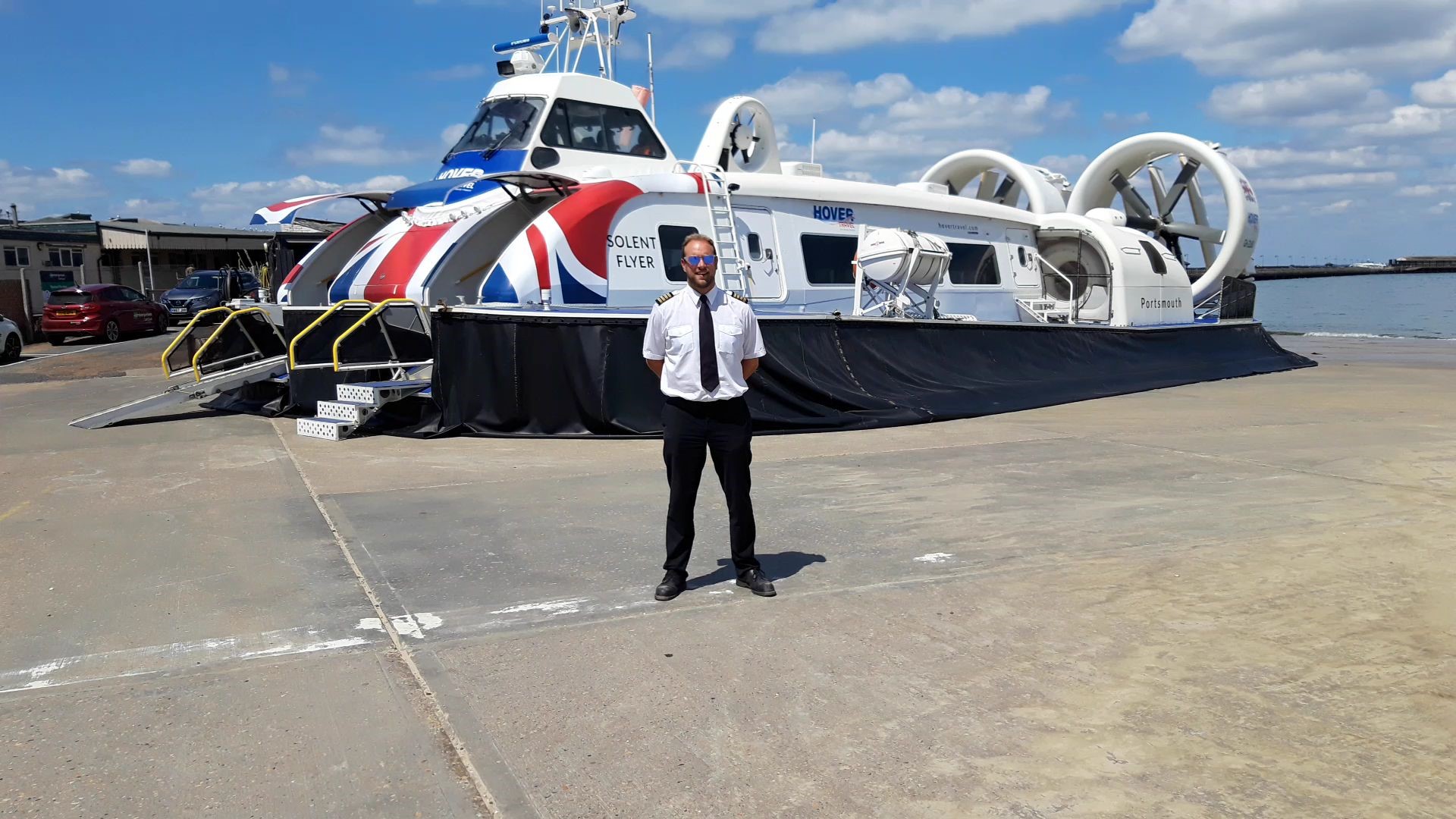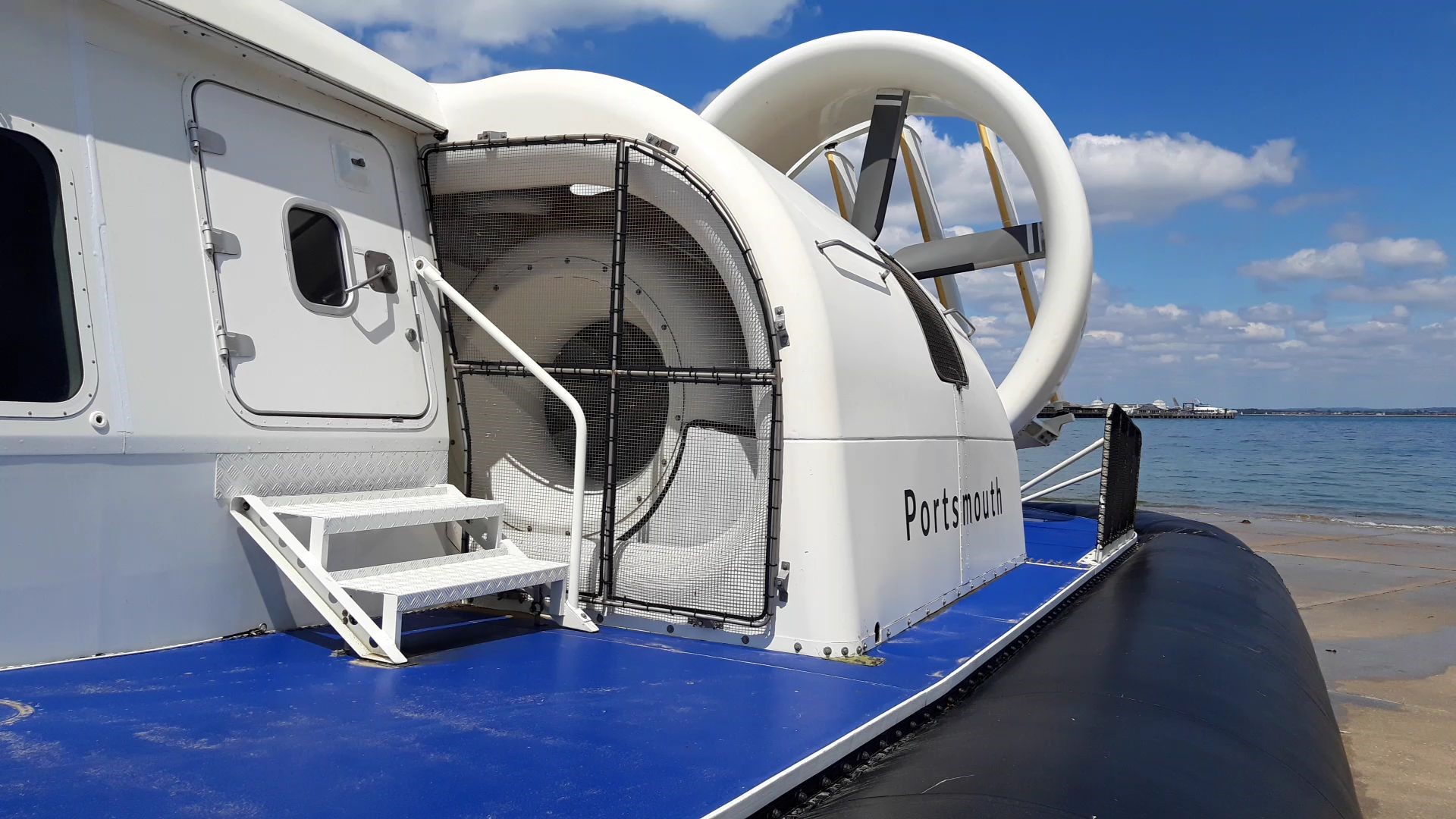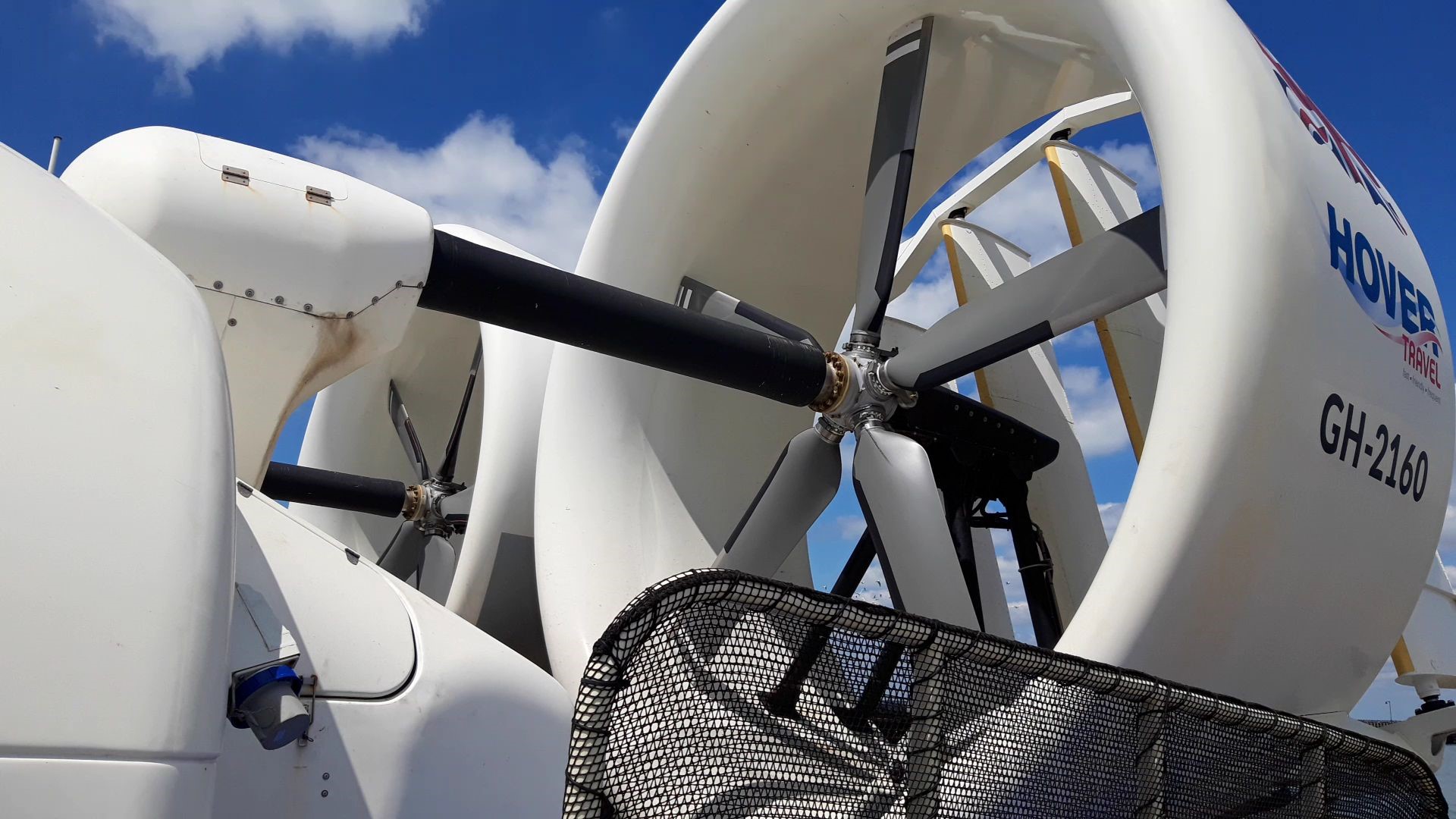Hovercraft Operating
- How Do You Fly a Hovercraft?
- How Do You Lift The Hovercraft Up?
- How Does The Hovercraft Move?
- How Do You Steer?
- What If I Want To Be a Hovercraft Pilot?

How Do You Fly a Hovercraft?
A hovercraft is not like a boat and not really like a plane, so what is it like to ‘fly’ a hovercraft? Because a hovercraft is supported by a cushion of air it is not affected by the tides in the way that a boat would be, the lack of contact with the ground gives the hovercraft the ability to move in any direction, easily sliding sideways or backwards with little resistance.
This presents a unique challenge for the ‘Hovercraft Pilot’ to be able to take advantage of these unique abilities, whilst at the same time keeping the hovercraft under control in all weathers, choppy seas, in both day and night-time as well as over land!
Therefore, ‘Hovercraft Pilots’ have to undergo specialist training before they are able gain the qualifications to become a Captain on this type of vessel.

How Do You Lift The Hovercraft Up?
The Hovercraft has two engines, one on either side (Port and Starboard). Each engine drives a propeller as well as a set of two lift fans situated on the side decks.
These fans are powered directly from the engine, as the engine gets faster, the fans turn faster, so as the Pilot increases the power, the craft will lift off the ground. At full power the hovercraft will be 1.6 metres above the surface it is hovering over and friction will be reduced to almost nothing. This system allows the Pilot to control the speed of the hovercraft by reducing the power to increase friction, causing the hovercraft to slow down and eventually stop.
The skirt of the hovercraft will not only trap the air in order to maintain the ‘hover height’ but also provide a natural stability, keeping a constant air pressure even during rough seas, keeping the hovercraft clear of waves or other obstacles.

How Does The Hovercraft Move?
The Hovercraft is fitted with two very large propellers which are also driven directly from each engine. These provide a great deal of thrust to push the hovercraft forwards, the propellers are housed in ducts which improve the efficiency of the propellers, particularly at low speed and when accelerating.
Because these are variable pitch propellers, each blade of the propeller can swivel, this allows the Pilot to control the amount of thrust being generated without changing the engine speed. Therefore the amount of thrust can be constantly controlled without affecting the all-important lift air supply. Another advantage of variable pitch propellers is that the Pilot has the option to use reverse thrust, pushing the hovercraft backwards, making this type of hovercraft one of the most manoeuvrable ever built.

How Do You Steer?
Mounted immediately behind the propellers are large rudders which the pilot can control using either foot pedal or a joy-stick mounted on the Pilots armrest.
These rudders can move quickly right or left to direct the thrust from the propellers, pushing the hovercraft in the direction that the Pilot wants to go. This is where the Pilots specialist training and skill are important in order to maintain control. Remember the almost total lack of friction? Simply turning the rudders would spin the hovercraft around no matter how fast it is going, ending up travelling backwards but not actually changing direction! Therefore the rudders need to be used very carefully, as soon as the hovercraft starts to turn, the Pilot will start to turn the rudder the opposite way, in order to control the rate at which the hovercraft turns, and perfecting this skill and forms a large part of hovercraft training.
The other thing to remember is that the hovercraft will be constantly affected by any wind and so the rudders also play a vital role in counter-acting this in order to keep the hovercraft on-course. The effect of the wind is even more exaggerated when the hovercraft is on land, and it is not unusual to see a hovercraft traveling side-ways across Ryde beach on windy days.
What If I Want To Be a Hovercraft Pilot?
Hovercraft operated in the UK are regulated by the Maritime and Coastguard Agency (MCA) who set out the level of qualification and training required.
Candidates for training will come from a marine background, having spent many years at sea in order to obtain the officer qualifications required.
Before being trained, potential pilots will be assessed to understand how well they are able to adapt to this entirely new method of controlling a high speed craft at sea.
When someone has obtained all of the necessary qualifications, they will start training here at Hovertravel with one of our instructors. The training can take about three weeks, followed by a test with an examiner.
This then allows the new Pilot to start operating on the route under the supervision of a more experienced Captain until they gain the experience necessary to be issued with a Type Rating Certificate allowing them to start venturing out alone.
So it is not an easy thing to do, involving much study and time at sea in order to obtain the qualifications needed, and that is before you even set foot on the hovercraft.
If however you are gaining these qualifications and would like more information please contact us at recruitment@hovertravel.com
Current Requirements;
- Master II/2 or II/3 or
- Master II/3, limited to “Hovercraft less than 500 GT on near-coastal voyages only”.
Holders of appropriate UK qualifications may apply to obtain this CoC issued by the MCA under STCW regulation II/3 as stated in MSN1856 and with reference to Annex D therein.
- Master II/2 or II/3 - Upgrade without Examination
- Chief Mate II/2 or II/3 - Upgrade without Examination
- OOW II/1 (Unlimited) - Upgrade requires a pass in MCA Orals Examination ‘D’
- Royal Navy Navigation Watch Certificate or Command Qualification (STCW II/1) – Upgrade requires a pass in MCA Orals Examination ‘D’ and additional requirements - see Annex D
- A Master CoC issued by a foreign government and endorsed with a UK Certificate of Equivalent Competency (CeC) issued by the MCA
At Hovertravel, our teams have collectively over 450 years of Pilots & Engineering experience and always happy to share the passion of these fabulous hovercraft. For those wishing to learn a little more about our current hovercraft, see below.
The 12000TD is a ground-breaking new model bringing together the combined experience and heritage from Griffon Hoverwork, to deliver the most technically advanced and modern hovercraft available today. Maintaining the renowned robustness of the Hoverwork legacy, mixed with the light-weight approach of Griffon hovercraft, the 12000TD introduces the newest technology and production quality improvements.
- Designed and built in a modular method, delivering the commercial benefits of a standardised platform.
- A highly configurable internal main cabin layout and wheelhouse arrangement, to meet any operational need. Can be fitted for a passenger or logistics configuration.
- In the standard Passenger variant the wheelhouse is centrally mounted above the main cabin to provide excellent all around visibility for the pilot.
- Two over the bow loading ramps are fitted for easy self-loading of passengers and light cargo.
- The skirt uses the latest development of a bag and finger type, manufactured from materials proven during thousands of operating hours in the harshest environments.
- Highly developed integrated lift and thrust systems, driven by the reliability and economy of two MAN D2862 diesel engines.
Equipped with a hybrid drive system, and by using two engines instead of four and larger propellers the hovercraft delivers the advantages of low running and maintenance costs, as well as exceptionally low noise. These production improvements on the 12000TD mean the noise levels are significantly reduced when compared with craft of a similar size, the average reading taken in the public space was 74dB, equivalent to that of office noise.
Designed and built to comply with Lloyds Register Special Service Craft Rules with a notation set of; 100A1 SSC Passenger (A) ACV HSC LDC G2 MCH and is also compliant with UK MCA High Speed Craft Regulations based on the applicable sections of the IMO High Speed Craft Code 2000.
If you are interested in purchasing a 12000td, or any other model please contact our sister company Griffon Hoverwork
